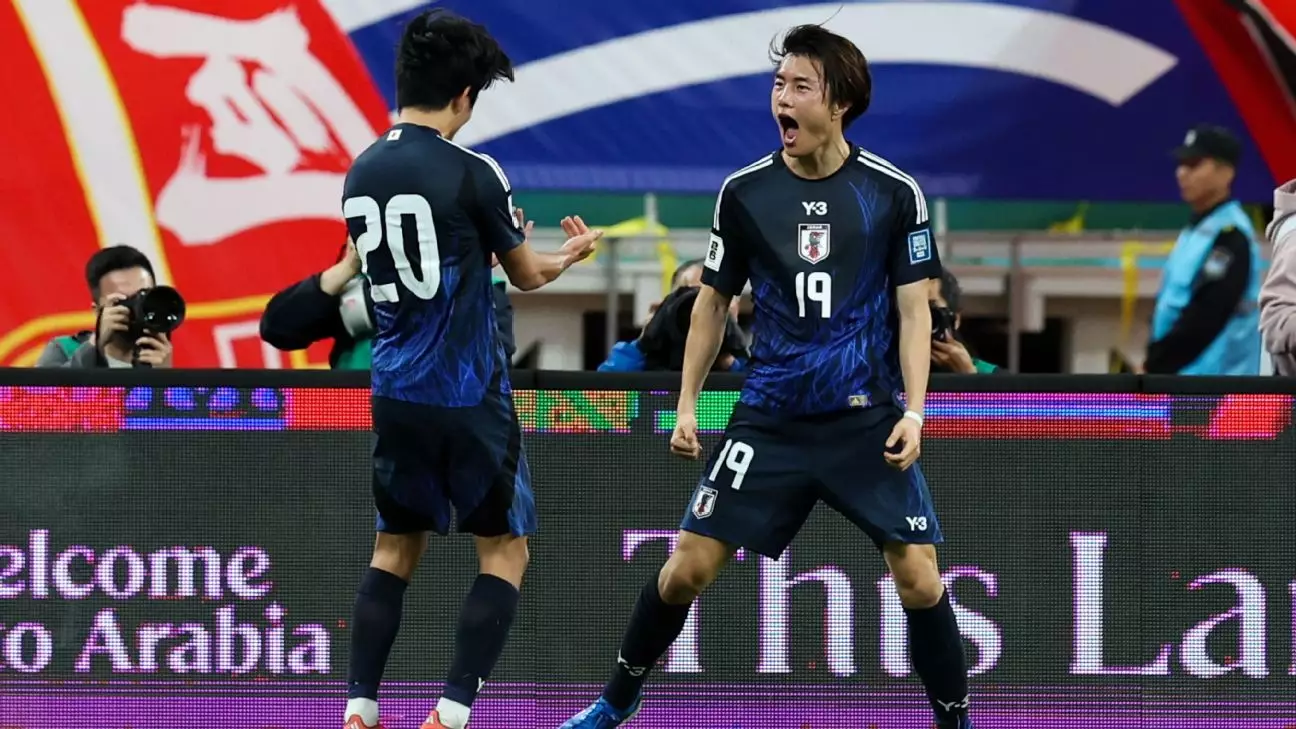As the third round of Asian qualifiers for the 2026 FIFA World Cup approaches its conclusion, the narrative surrounding Japan’s national football team has begun to shift dramatically. With a commanding lead in Group C and poised for their eighth consecutive World Cup appearance, the Samurai Blue are set to entrench their legacy further on the international stage. However, this time, merely qualifying seems to fall short of their ambitions. Under the guidance of coach Hajime Moriyasu, the focus has shifted toward a bold aspiration – claiming the World Cup title itself. This article explores Japan’s status as they aim for greater heights, evaluating their roster, depth, coaching methodologies, and mental toughness in pursuit of footballing glory.
Japan’s supremacy in their qualifying group has been marked by an impressive performance that has left their rivals trailing significantly. With a substantial nine-point lead, the Samurai Blue appear to have a straightforward pathway to qualification. Encounters against Bahrain and Saudi Arabia in March present them with the opportunity to seal their World Cup fate. However, merely qualifying is not the pinnacle of their ambition. Coach Moriyasu has articulated a vision that extends beyond participation, indicating a commitment to chasing the prestigious trophy. Historically, only European and South American teams have lifted the World Cup, yet Japan’s aspirations reflect an ambitious willingness to challenge the existing football paradigms.
Japan’s starting lineup boasts a commendable composition of players who ply their trade in some of Europe’s top leagues. Recent World Cup fixtures demonstrated their capability, with memorable victories against heavyweight teams like Germany and Spain. The current roster, led by talents such as Zion Suzuki in goal and a potent attacking trio of Takumi Minamino, Takefusa Kubo, and Ayase Ueda, showcases a blend of skill and competitive edge. While Japan might not yet rival luminaries like France and Argentina in sheer talent, their players’ cohesive performance surmounts individual accolades, indicating a team chemistry that could bridge the gap between them and the giants of football.
Despite the promise shown by the starting eleven, Japan’s depth presents a critical challenge. Players like Daizen Maeda and Reo Hatate, with solid club credentials, have yet to make substantial international impacts. Additionally, injuries to key players like Hiroki Ito and Takehiro Tomiyasu expose fragilities in the squad’s robustness. The enduring inclusion of veterans like Yuto Nagatomo reflects a broader issue: a lack of fresh, dependable talent ready to step into crucial roles. For Japan to ascend to the elite level, they will need to cultivate a bench that can consistently support the starting players and push for competitive spots, rather than relying on an aging core or inconsistent performance from less-experienced players.
Moriyasu’s coaching journey has been characterized by strategic evolution. While his reliance on counter-attacking strategies drew criticism, recent matches indicate a newfound willingness to embrace a more attacking philosophy. By integrating players like Kaoru Mitoma and Ritsu Doan into wing-back roles, Moriyasu has adopted an audacious approach that has revitalized the team’s attacking potential. This shift signifies a pivotal change in Japan’s tactical identity – from a cautious side to one that confidently presses and seeks dominance over opponents, even those considered on par with them.
Japan’s identity in football is deeply intertwined with its cultural values of respect and humility. This ethos, while admirable, has occasionally hampered their competitiveness on the grand stage. As the Samurai Blue set their sights on greater achievements, incorporating a more aggressive mindset could prove beneficial. A balance must be struck between their cultural identity and the ruthless ambition required to win. The current qualifications showcase a team that plays with confidence and a touch of arrogance, suggesting that they are beginning to embrace a more aggressive competitive spirit. Such an evolution will be crucial if they aim to break past their historical limitations and achieve a quarterfinals appearance, and potentially more.
Japan is poised at a crossroads as they prepare to secure their place in the 2026 World Cup. While their historical context and recent performances provide a strong foundation, the aspirations of conquering the football world require an unyielding commitment to growth, depth, and a recalibration of mentality. Much will depend on how they navigate the coming months and whether they can translate substantial ambition into tangible success on the global stage.

